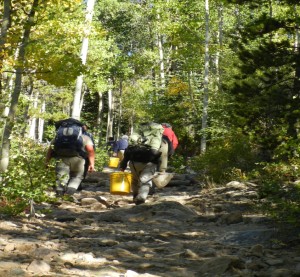Jeff Florence jflorence@tu.orgCommunications and Administrative Assistant
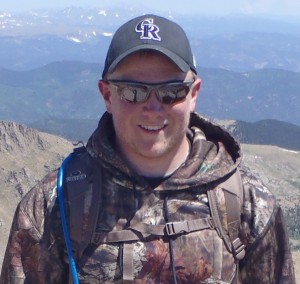 Jeff was hired on last summer as our first ever Communications Intern. Since his internship Jeff has been doing some freelance work for us and recently graduated from Metropolitan State University. We are fortunate enough that Jeff was looking for work when we needed him the most!! Jeff has now been brought onto our staff to help with all things communications as well as other administrative tasks.
Jeff was hired on last summer as our first ever Communications Intern. Since his internship Jeff has been doing some freelance work for us and recently graduated from Metropolitan State University. We are fortunate enough that Jeff was looking for work when we needed him the most!! Jeff has now been brought onto our staff to help with all things communications as well as other administrative tasks.
Jeff was born and raised in Highlands Ranch, Colorado. From an early age Jeff has been camping, hiking and fishing in his free time and he also played hockey and baseball growing up. Jeff graduated with a minor in recreation services at Metropolitan State University of Denver. He hopes to one day write for an outdoor magazine and has done some free lance writing for Cabela’s in the past. Jeff is looking forward to getting to work for Trout Unlimited and help spread the story of a great organization while gaining experience in both journalism/communications and non-profit management.
Chase Moore cmoore@tu.org Youth Education Coordinator
Chase is excited to bring his leadership skills and background in environmental education to strengthen CTU’s youth education programs throughout the state. While bicycle touring and backpacking have been Chase’s passion and means to explore the Pacific Northwest, Southwest deserts, and the great state of Colorado, he has always watched anglers gracefully dot the stream banks along many of his adventures. Curiosity and the necessity to see what the fuss was about, Chase decided to give fly fishing a chance via a Tenkara rod. Simply put, “Hook, line, and sinker.”
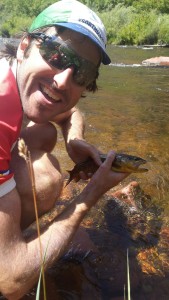 Chase is joining CTU to help youth across the state understand the importance of a healthy watershed, not just from an angling standpoint, but from a resource management perspective. Put simply, wildlife and people need access to clean, fresh, viable water. Whether leading conservation efforts or leading residential science camps in the Pacific Northwest, working on riparian restoration projects in central Oregon, or teaching environmental science in the Rocky Mountains, Chase has been on the front lines helping people of all ages learn about their natural world and watershed.
Chase is joining CTU to help youth across the state understand the importance of a healthy watershed, not just from an angling standpoint, but from a resource management perspective. Put simply, wildlife and people need access to clean, fresh, viable water. Whether leading conservation efforts or leading residential science camps in the Pacific Northwest, working on riparian restoration projects in central Oregon, or teaching environmental science in the Rocky Mountains, Chase has been on the front lines helping people of all ages learn about their natural world and watershed.
A colleague and friend once pondered what makes Chase such a great teacher and thought “It has to do, I think, with making teaching a craft rather than a formula.” Needless to say, Chase is looking forward to applying his craft and more importantly getting young people excited about their waterways. Who knows, maybe there will be more anglers enjoying our streams when people learn to take a moment and slow down. Chase and his saddle are glad he did and are even more thankful to join the family at Colorado Trout Unlimited.









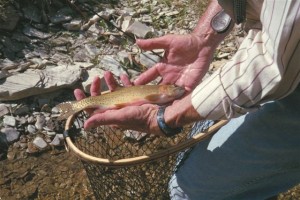
 Mining Law.
Mining Law. notable spill, the same tragedies are happening throughout the west. The Uncompahgre River near Ouray is lifeless until the metals fall into the depths of Ridgeway Reservoir. The upper Animas River suffers mine waste that steadily drains into the river at a volume equal that of the Gold King Mine spill once a week.
notable spill, the same tragedies are happening throughout the west. The Uncompahgre River near Ouray is lifeless until the metals fall into the depths of Ridgeway Reservoir. The upper Animas River suffers mine waste that steadily drains into the river at a volume equal that of the Gold King Mine spill once a week.
 - Beyond being an awesome angler, what else do you do in your spare time or for work?
I’m semi-retired, still working a couple of days per week as an allergy and asthma doctor in a practice I’ve been devoted to for over 25 years. I love to hunt elk, deer, and pheasant. I also play drums with a weekly jazz group, cycle regularly, and still cut my lawn and own several chainsaws to keep in shape.
- Beyond being an awesome angler, what else do you do in your spare time or for work?
I’m semi-retired, still working a couple of days per week as an allergy and asthma doctor in a practice I’ve been devoted to for over 25 years. I love to hunt elk, deer, and pheasant. I also play drums with a weekly jazz group, cycle regularly, and still cut my lawn and own several chainsaws to keep in shape. This is great news for those along the Colorado River basin that are depending on a wet winter to bring life back to their crops, reduce drought conditions, and replenish
their reservoirs.
This is great news for those along the Colorado River basin that are depending on a wet winter to bring life back to their crops, reduce drought conditions, and replenish
their reservoirs.




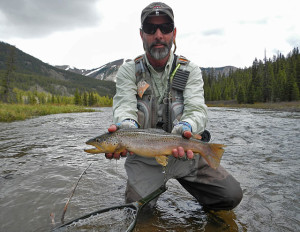 out of water will definitively kill the fish. There are tricks to minimizing air exposure and handling while still getting photo proof of your catch.
out of water will definitively kill the fish. There are tricks to minimizing air exposure and handling while still getting photo proof of your catch.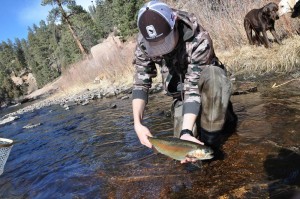 it doesn't need to leave the water). Even when the handling time is minimal, fish still need be released properly as well. When fish have experienced considerable physiological stress due to exercise and handling, they can lose their equilibrium, coordinated movements of their fins and roll or nosedive- resulting in death further on downstream.
it doesn't need to leave the water). Even when the handling time is minimal, fish still need be released properly as well. When fish have experienced considerable physiological stress due to exercise and handling, they can lose their equilibrium, coordinated movements of their fins and roll or nosedive- resulting in death further on downstream.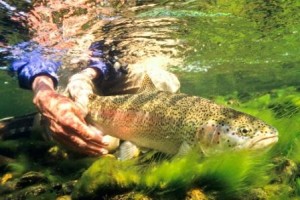 when helping it recover, do not move a fish back and forth—recall that water moving backwards over the gills does not help, but in fact, can actually harm the fish," says Dr. Danylchuck. "Let the fish go when its fins are showing coordinated movements, it can keep itself upright and it is actively trying to swim away from you."
when helping it recover, do not move a fish back and forth—recall that water moving backwards over the gills does not help, but in fact, can actually harm the fish," says Dr. Danylchuck. "Let the fish go when its fins are showing coordinated movements, it can keep itself upright and it is actively trying to swim away from you."









